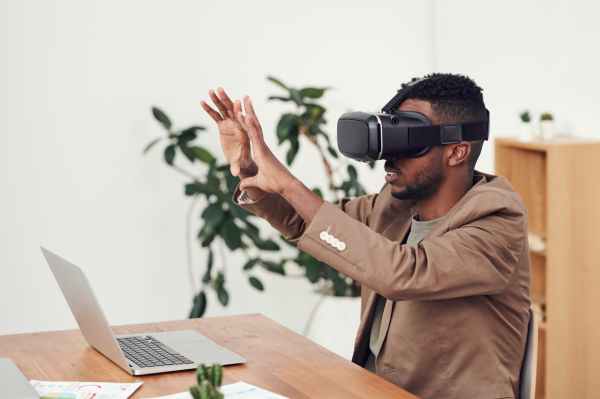Virtual Reality has applications in numerous sectors such as industry, education and healthcare.
Specifically in the medical field, it involves the use of simulated virtual environments for different purposes such as staff training, treating phobias or carrying out rehabilitation processes.
Through devices such as Virtual Reality glasses and others, the application of this technology in the healthcare sector has numerous uses and benefits. Let’s look at some of the most relevant in both cases.
Applications of VR in medicine
The applications and uses of Virtual Reality in the healthcare sector affect both professionals and patients:
- Telemedicine. Telemedicine allows remote consultations or monitoring, mainly helping people with reduced mobility or those living in isolated areas. An example of VR, which can also be done with Augmented Reality (AR), is remote surgery.
- Surgery. The field of surgery can also be supported by Virtual Reality, allowing surgeons to operate in three-dimensional environments customised to the circumstances, thereby increasing precision and minimising risks in real operations.
- Rehabilitation. From a physical perspective, VR, like AR, helps to provide balance, mobility and coordination therapies. It can also aid neurological rehabilitation by recreating images from the past in patients with memory problems, stimulating their memory and improving their cognitive abilities.
- Training and simulation. Thanks to the ability to simulate realistic situations, both those who are studying for a career and those who are already practising have the opportunity to practise practical scenarios without putting patients at risk.
- Mental health and phobias. In mental health, VR technology allows professionals to develop therapies that are more appealing to patients by offering them better ways to carry out the therapeutic tasks that must be performed between sessions. Virtual Reality environments can also help against irrational responses to certain situations, objects or elements.
- Medicines. Although not strictly part of the medical sector, the pharmaceutical industry also has an impact on the former. In this case, VR allows new molecules in medicines to be studied, designed and tested, as well as their possible impact on their development or subsequent modifications.
Benefits of Virtual Reality in the healthcare sector
All these features we have listed provide a number of advantages for Virtual Reality in the world of medicine and healthcare. Let’s take a look at some of them:
- Risk reduction. Having Virtual Reality environments allows risks to be reduced in certain procedures or operations that have been previously tested in the digital world.
- Cost reduction. From both a training and patient treatment perspective, having VR available can avoid travel, which means cost savings for both the relevant administrations and, depending on the case, the people undergoing treatment themselves.
- Patient satisfaction. The benefits associated with treatments or healthcare personnel also have another derivative: increased patient satisfaction as they feel more informed or actively involved in the healthcare process in which they are immersed.
- Research. Protocols, techniques or innovative tools that can be tested in Virtual Reality are beneficial to researchers in terms of applying previously developed theoretical studies in a practical setting.
We can summarise the benefits of VR in the world of healthcare in that it can help in areas as varied as staff training, rehabilitation treatments, surgical operations and a greater boost to telemedicine.







